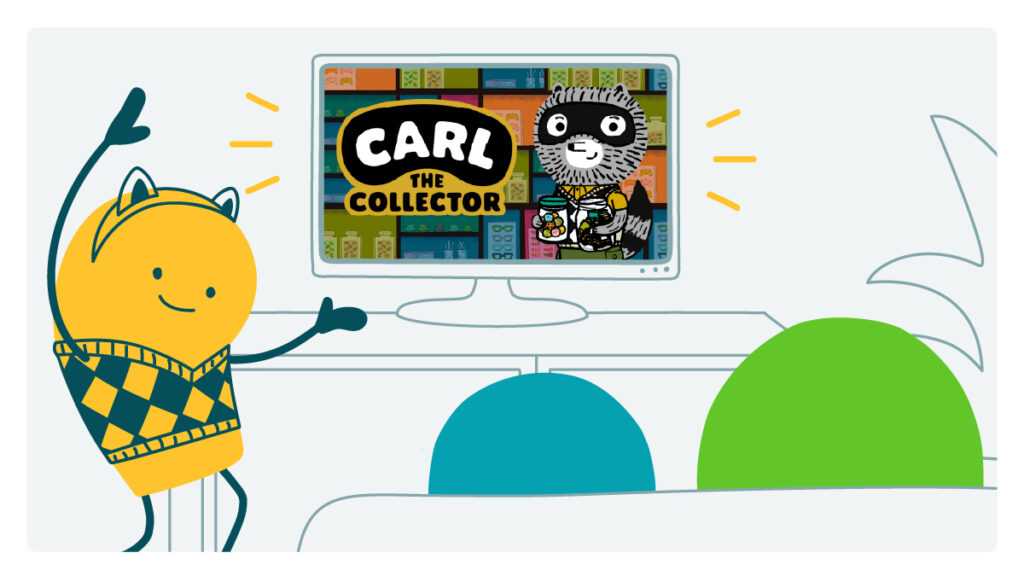
If you’re a parent or caregiver of young kids (or just a person who enjoys well-made, educational public television), you might have come across PBS’s new addition to their children’s programming: Carl the Collector.
Carl’s a young boy/racoon who, as the show’s name implies, likes to collect things: from everyday things like rocks and sticks you might find on any playroom’s windowsill, to more whimsical items like fake mustaches. For Carl, his collections are more than just the product of a backyard excursion. Carl’s autistic, which makes him one of the few neurodivergent characters to have a lead role in popular TV.
Carl the Collector strikes a delicate balance between autism-driven stories and stories about everyday experiences that all kids can relate to — and the show strikes that balance exceptionally well. “Carl the Collector spotlights neurodivergent characters while exploring and celebrating the entire spectrum of humanity,” says Creator and Executive Producer Zachariah OHora. “[Their world] is designed to be a place where all viewers will see themselves or someone they know in it. We hope Carl and his friends will encourage empathy and understanding, and ultimately show that everyone benefits when we recognize and embrace our differences.”
What we ❤️ most about Carl the Collector is that it’s a perfect example of how to center the lived experience of audience members when communicating about a health topic — and how this approach can make a great material even stronger. From the show’s creator, to its director, to other members of the production team, many of the people in charge of bringing Carl and his friends to life are either autistic themselves or have close relationships with people on the spectrum. Carl and his friend Lotta, the other autistic cast member, are voiced not by professional actors, but by kids who are neurodivergent (check out this article for more details about how the show’s produced). Lotta also highlights the experiences of autistic girls, who are often overlooked and underrepresented in media.
This commitment to reflecting Carl and Lotta’s everyday challenges, joys, and passionate interests makes Carl the Collector feel authentic in a way few TV shows do. But just like in real life, autism is only one part of their story. Carl and his friends explore, go on adventures, argue sometimes, and get into trouble — but most importantly, they learn how to work together to solve problems while respecting each other’s unique personalities. And that’s a lesson we all — adults, kids, and racoons — can embrace.
The bottom line: Carl the Collector brings us important lessons about autism in the best way possible — with sensitivity, humor, and taught by an adorable racoon in an argyle sweater.
Copy/paste to share on social (and tag us!): If there’s ever a time to spotlight diversity — and authentic autism representation — it is now. Check out CommunicateHealth’s take on @PBS’s adorable new show, Carl the Collector, featuring one of very few neurodivergent main characters in children’s TV: https://communicatehealth.com/wehearthealthliteracy/tv-club-carl-the-collector/
Browse recent posts